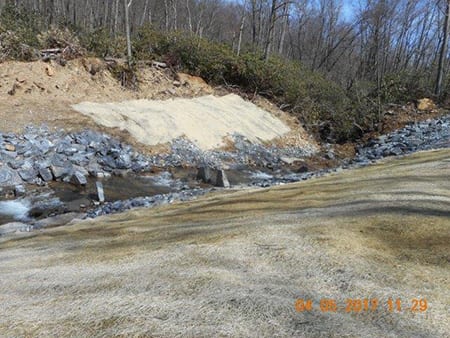Once a pipeline becomes exposed, its chances for failure increase. Fortunately, pipeline accidents are extremely rare. Pipeline companies undertake many prevention and safety measures to ensure the integrity of their pipeline systems. A particularly dangerous situation can occur if an underground pipeline is exposed due to erosion.
That’s where Submar comes in.
In Pennsylvania an 8-inch diameter propane pipeline that crosses Panther Run became exposed for approximately 12.5 linear feet. There were several reasons for the erosion at this site:
- All-terrain vehicle (ATV) traffic had created several small streams over the pipeline.
- The channel bed of Panther Run had degraded, and the banks had begun to migrate.

If left uncovered and unprotected, the site risked potential damage due to continued pipeline exposure. Submar addressed the pipeline exposure by restoring cover and protection to the pipeline. The crew remediated the pipeline right-of-way (ROW) through various innovative pipeline erosion control methods:
- Waterbars (or earthen berms) were constructed on the banks to redirect flow from the pipeline to a stable discharge point; rock-lined swales were also constructed to prevent further erosive scour.
- Upon completion of the final grading, an erosion control blanket was placed on the banks.
- Within the stream itself, rock shield was wrapped around the exposed section of the pipeline to protect it from abrasion. A series of rock cross vanes was constructed to provide a means to step down to the eroded existing bed elevation while decreasing stream velocity near the banks and increasing the energy in the center of the channel. Cross vanes also improve stream habitats.
- All remaining disturbed stream banks were stabilized with seed and boulders.
In this case, the boulders actually served two purposes: to help fight water erosion and to deter ATV traffic and further protect against pipeline exposure.
Often it takes a creative long-term solution to fight pipeline exposure. To learn more about how we offer solutions on pipeline exposures, see our projects page.


